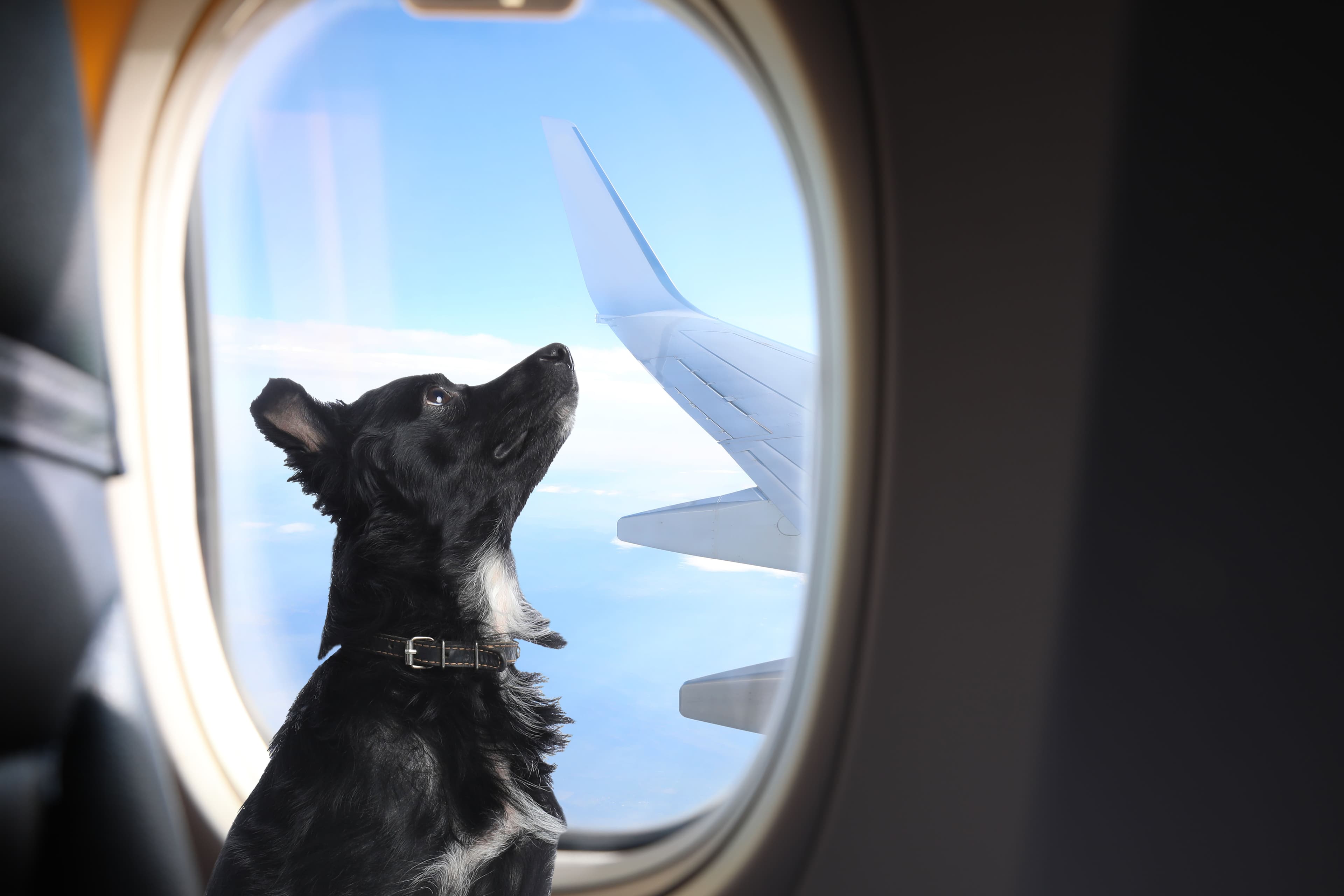Flying with your dog
Traveling with a dog can be challenging, especially when flying. With the right preparation and a few practical tips, your flight can be stress-free and safe for both you and your four-legged friend. Here are some important points to consider:
1. Preparation Before the Flight
Vet Visit: Schedule an appointment with your vet to ensure your dog is healthy and has all necessary vaccinations and health certificates. Some airlines require a health certificate no older than ten days.
Travel Documents: Check the entry requirements of your destination country. Some countries have specific requirements like quarantine or special vaccinations.
Getting Used to the Crate: If your dog will be traveling in the cargo hold, they should be accustomed to the crate. Have them sleep and eat in the crate weeks before the trip to ensure they are comfortable.
2. The Right Crate
Size and Safety: The crate should be large enough for your dog to stand, turn around, and lie down. It should be sturdy and well-ventilated. Ensure it meets IATA (International Air Transport Association) regulations.
Comfort: Place an absorbent mat in the crate and include your dog’s favorite toy or a familiar blanket to provide comfort.
3. Booking and Check-In
Early Booking: Since airlines accept only a limited number of pets per flight, book early and inform them that you will be traveling with a dog.
Fees and Regulations: Check the specific regulations and fees of the airline. Some allow small dogs in the cabin, while larger dogs must travel in the cargo hold.
Check-In: Allow plenty of time for check-in. Arrive at the airport early to check your dog in without stress and complete all necessary formalities.
4. At the Airport and During the Flight
Stay Calm: Try to stay calm to reassure your dog. Dogs can sense their owner’s anxiety and may become stressed themselves.
Final Walk: Take your dog for a walk before check-in to allow them to relieve themselves and get some exercise.
Water and Food: Feed your dog a few hours before the flight to prevent stomach issues. Ensure they have access to water, but don’t overdo it to avoid frequent urination.
5. Arrival at the Destination
Check-Up: Once you retrieve your dog at the destination, check to ensure they are unharmed and comfortable.
Adjustment: Give your dog time to adjust to the new environment. Take a short walk to help them stretch and relieve themselves.
Differences Between Small and Large Dogs
Small Dogs:
Cabin: Small dogs, weighing less than 8 kg including the crate, are often allowed in the cabin. The crate must fit under the seat in front of you.
Breaks: Since small dogs travel in the cabin, you can tend to them more easily during the flight.
Large Dogs:
Cargo Hold: Larger dogs must travel in a special crate in the cargo hold. Ensure you understand the conditions to keep your dog safe and comfortable.
Requirements: Make sure the crate meets IATA regulations and that your dog has enough space to move around.
With proper preparation and organization, flying with your dog can be a pleasant experience. Inform yourself in advance about the airline's and destination country's requirements, get your dog accustomed to the crate, and plan sufficient time for check-in. This way, both you and your dog can travel relaxed and safely.






